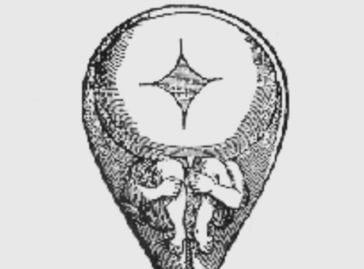Preformationism theorized that organisms develop from miniature versions of themselves between the 1600s to 1800s many scientists believed the idea including antonie van leeuwenhoek who discovered sperm cells

Preformationism: The Miniature World Within

The development of organisms has long been a subject of fascination and speculation for scientists throughout history. One peculiar theory that gained significant traction during the 1600s to 1800s was Preformationism. This theory postulated that organisms, including humans, develop from miniature versions of themselves.
Preformationism caught the attention of prominent scientists, like Antonie van Leeuwenhoek, who made groundbreaking discoveries in the field of biology. Leeuwenhoek, often referred to as the “father of microbiology,” is renowned for his invention of the microscope and his observations of various microscopic structures. Among his many significant findings, he uncovered the existence of sperm cells.
The concept of Preformationism suggests that within the sperm or egg exists a fully-formed, miniature version of the future organism. In other words, everything that an organism will be, both physically and genetically, is already predetermined and present within these reproductive cells. According to this theory, growth and development merely involved the expansion of these preexisting structures.
The idea of Preformationism originated in the 17th century and continued to gain popularity until the 18th century. During this time, scientists studied numerous organisms under the microscope, discovering intricate structures and complexities within them. These observations seemed to support the notion of preformed beings within reproductive cells. Consequently, the theory found its way into various fields, including embryology and developmental biology.
Despite its popularity at the time, Preformationism eventually lost its appeal within the scientific community. The emergence of alternative theories, such as Epigenesis, which proposed that organisms develop progressively from simpler forms to more complex ones, led to a decline in support for Preformationism.

Though Preformationism has been largely discredited, it is still recognized as an important milestone in the history of biological thought. It represents an early attempt to explain the intricate processes of reproduction and development. Moreover, it highlights the curiosity and dedication of scientists like Antonie van Leeuwenhoek, who tirelessly observed the microscopic world to unravel the mysteries of life.
In conclusion, Preformationism once captivated the minds of scientists during the 17th to 18th centuries. This theory, which posited that organisms developed from preexisting miniature forms within reproductive cells, enjoyed support from influential figures like Antonie van Leeuwenhoek, credited with the discovery of sperm cells. Although Preformationism eventually fell out of favor, it remains an important chapter in the history of biological theories.
Tags
Share
Related Posts
Quick Links
Legal Stuff

